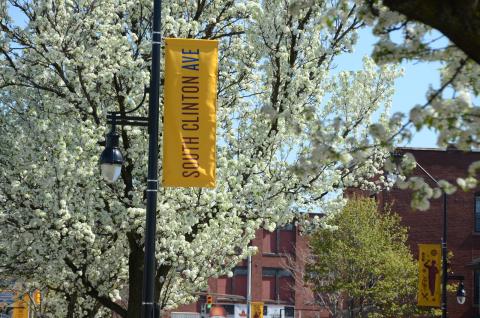Community Cats
What are Community Cats, and how are they managed?
Community cats refers to all un-owned or loosely owned, free-roaming, and abandoned cats and feral cats.
Feral cats are un-owned, non-socialized, free-roaming cats.
Trap-neuter-vaccinate-return (TNVR) is the most humane and effective method known for managing community cats. The cats are trapped, spayed and neutered, vaccinated, ear-tipped, and then returned to their outdoor homes. Caretakers provide food and shelter and monitor the cats. When possible, young kittens are removed for adoption. The latest recommendation is that healthy, friendly adults also be returned to the neighborhood. Doing so returns cats to their "homes" where they were thriving and had access to shelter and resources, often including multiple people who feed and care for them. Additionally, such returns reduce the likelihood that new cats will move into the area vacated by the removal. When new cats move into an area, there is often increased reproduction, which means more kittens and population growth.
Why TNVR works
- Cats are vaccinated against rabies
- Immediate reductions are realized when young kittens are re-homed
- Leads to long-term management, reduction, and eventual elimination of roaming cat populations
- More cost-effective for municipalities compared to trapping, sheltering, and euthanasia
- Reduces inundation of kittens at shelters every spring
- Keeps cats out of shelters, which are inherently stressful and bad for medical and behavioral wellness
- Decreases nuisance complaints by reducing cat fighting, mating, and spraying
- Engages citizens in helping as volunteer trappers and caretakers
- Appeals to external funding source's interest in paying for spay/neuter surgeries and care
- Supports mediation of conflicts by nonprofit organizations between volunteers and residents
- Maintains the health of the colony cats and allows caretakers to trap new cats that may join the colony
Why Removal Does Not Work
Except for a few successful projects on isolated oceanic islands, removal efforts have not proven successful. A significant majority of the cats need to be removed from the population to reduce their reproductive capacity. Doing so is labor and cost-intensive particularly as new cats move into the vacated area to take advantage of the available resources. Generally, what happens is that the individual cats change without any significant reduction in the population numbers. Additionally, removal typically means that cats are turned over to shelters. They are held for mandatory holding periods that are designed to allow owners time to locate missing pets. Given that community cats are by definition not owned, the holding period is an unnecessary and inefficient use of limited shelter resources. After the holding period, some friendly cats that may have been socialized with people are made available for adoption. Such cats that are placed in homes are thereby competing for those adoptions that might otherwise be available to truly at-risk companion cats (e.g., indoor cats associated with deceased owners, abandonment, animal cruelty). However, many community cats are ferals that have not been socialized with people. Their options are limited when taken into shelter systems and most do not result in live releases unless they can be returned to their original colonies. Some people may advocate for extermination, however, the number of cats that need to be put to death to achieve marked reductions in populations of free-roaming cats is unacceptably high and morally reprehensible for most communities.
Source: The Humane Society of the United States. 2014. Managing Community Cats: A Guide for Municipal Leaders.
At Rochester Animal Services, we work with local organizations and community members engaged in TNVR to support their efforts, including collaborations on grant-funded projects, surgical sterilizations in our own clinic, pet food for community cat caretakers, and contributing to funding surgeries provided by other clinics through our Pets for Life Program and participation with the Greater Rochester Animal Coalition. We also have a Barn and Working Cat program that helps place a small percentage of un-socialized cats into barns or other non-traditional homes.
For more information on community cats, visit the following resources:
- Rethinking the Animal Shelter's Role in Free-Roaming Cat Management
- Best Friends Community Cat Resources
- Best Friends Community Cat Programs Handbook
- Million Cat Challenge Pathway Planning for Cats
- Million Cat Challenge - The Cat Superhighway webinar
- Team Shelter USA - Community Cat Programs Handout
- Managing Community Cats: A Guide for Municipal Leaders
- How to Trap a Feral Cat for TNR
Community Cat position statements & letters of support
- The Humane Society of Greater Rochester
- The Humane Society of the United States
- Human-Animal Support Services
- National Animal Care and Control Association
- Best Friends Animal Society - Return to Field
- Best Friends Animal Society - Trap Neuter Vaccinate Return
- Cornell University Maddie's Shelter Medicine Program






